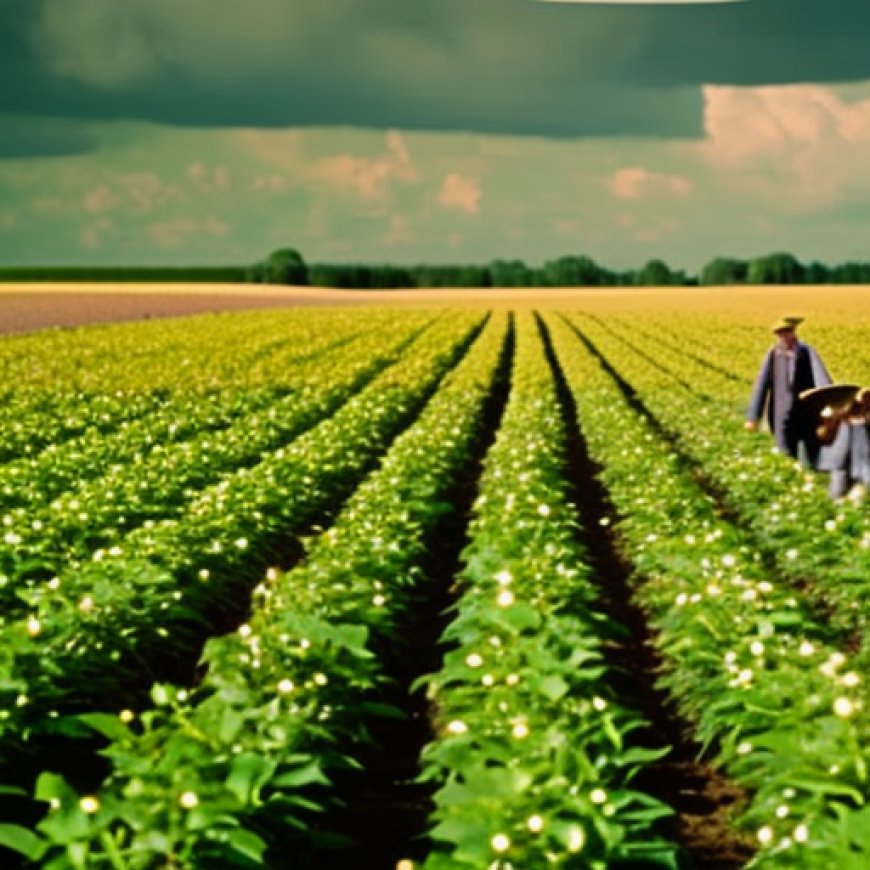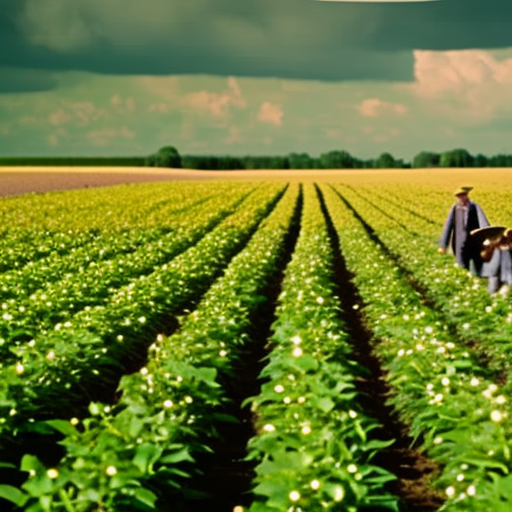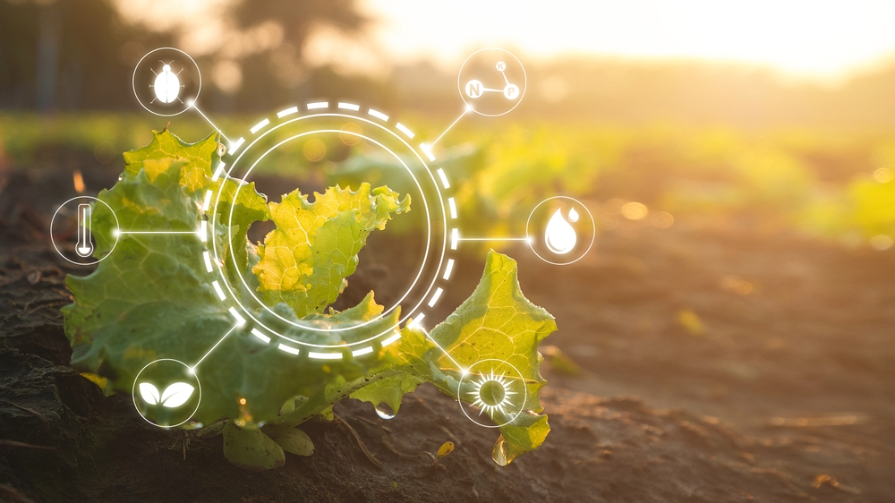Digital twinning: Emerging technology could revolutionize agriculture, researchers find
Digital twinning: Emerging technology could revolutionize ... Bryant University


Revolutionizing Agriculture Through Digital Twins

Picture this: a herd of livestock gather at their feeding and milking stations where sensors have been installed to monitor their health and behavior. Through the continuous collection of data, farmers remotely monitor the herd’s health, identify potential problems, create simulations to improve livestock treatments, and model the best barn systems to maintain air quality and temperature. All this remote management is made possible through a technology known as digital twinning.
Introduced in 2003, digital twins are virtual replicas of physical objects — in this instance, farmers — that are remotely linked to real objects; these copies collect data and simulate real situations and their outcomes so individuals can make better decisions. The technology’s popularity increased at the start of the pandemic and, in 2022, was valued at $6.9 billion; this number is expected to jump to $73.5 billion by 2027.
Transforming Agriculture with Digital Twins
While digital twinning is predominately used in manufacturing and engineering, Bryant Marketing Professor Sharmin Attaran, Ph.D., and two outside researchers recently explored how this technology can be used to revolutionize the agriculture industry. The three found that digital twins are helpful in mitigating shortfalls in production, anticipating output, reducing risk of crop failures, and monitoring crop growth and health — all of which was published in the Encyclopedia of Information Science and Technology.
“Digital twins offer a transformative approach to agriculture by enabling farmers to closely monitor crops, soil, and weather, ensuring optimized irrigation and resource use. This leads to cost savings and heightened productivity, enhancing the sector’s sustainability,” says Attaran. This information then helps the farmer improve management decisions like crop rotations plans, anticipated over- or under-production, and ways to address shortfalls in production.
The Role of Digital Twins in Sustainable Agriculture
Today, the United States is one of the world’s leading producers of food and agriculture products. With more people to feed, a higher demand for agricultural products, and increased concern over food quality and safety, the agriculture industry is under significant economic pressure to increase productivity and efficiency while maintaining profitability. To meet these challenges, researchers note that the industry needs new technologies, techniques, and information — such as digital twinning — to improve their yields and manage their resources more efficiently.
“In essence, digital twins in agriculture offer a holistic approach to farm management, resource use, predictive insights, and environmental adaptability,” Attaran says, adding how saving time and costs will improve sustainability and attract higher premiums for produce.
Researchers explain that farming processes are complex and dynamic because they depend on natural conditions. This technology, Attaran adds, aids in predicting weather patterns and understanding the long-term implications of climate change while highlighting stress points in agricultural systems caused by factors like soil quality or pollution.
“By analyzing real-time data from digital twins, farmers can foresee and react to various challenges, such as potential crop diseases, yield expectations, or equipment malfunctions,” Attaran says.
Enhancing Supply Chain Management
Digital twins also improve traceability and transparency in agriculture’s supply chain management by helping farmers anticipate disruptions, identify optimum transportation/logistics routes, and create contingency plans. While there is room for future research on digital twins, the technology’s future is looking bright. Farmers are open to innovation in agriculture technology to optimize their returns and minimize financial risk, according to a McKinsey & Company article, but the adoption of these emerging tools remains slow.
“Adopting digital twin solutions propels agriculture into a new era of digital efficiency and sustainable profitability,” Attaran says.
SDGs, Targets, and Indicators
| SDGs | Targets | Indicators |
|---|---|---|
| SDG 2: Zero Hunger | 2.4 By 2030, ensure sustainable food production systems and implement resilient agricultural practices that increase productivity and production, that help maintain ecosystems, that strengthen capacity for adaptation to climate change, extreme weather, drought, flooding and other disasters and that progressively improve land and soil quality | – Monitoring crop growth and health through digital twinning – Optimized irrigation and resource use – Improved management decisions for crop rotations and production shortfalls |
| SDG 9: Industry, Innovation, and Infrastructure | 9.5 Enhance scientific research, upgrade the technological capabilities of industrial sectors in all countries, in particular developing countries, including, by 2030, encouraging innovation and substantially increasing the number of research and development workers per 1 million people and public and private research and development spending | – Adoption of digital twin solutions in agriculture – Use of digital twins to improve farm management and resource use |
| SDG 12: Responsible Consumption and Production | 12.3 By 2030, halve per capita global food waste at the retail and consumer levels and reduce food losses along production and supply chains, including post-harvest losses | – Improved traceability and transparency in agriculture’s supply chain management through digital twinning – Anticipation of disruptions and creation of contingency plans using digital twins |
| SDG 13: Climate Action | 13.1 Strengthen resilience and adaptive capacity to climate-related hazards and natural disasters in all countries | – Prediction of weather patterns and understanding the long-term implications of climate change through digital twinning – Highlighting stress points in agricultural systems caused by factors like soil quality or pollution |
1. Which SDGs are addressed or connected to the issues highlighted in the article?
SDG 2: Zero Hunger
The article highlights how digital twinning can be used in agriculture to improve crop production, monitor crop health, and make better management decisions. These efforts contribute to SDG 2, which aims to achieve zero hunger by ensuring sustainable food production systems and resilient agricultural practices.
SDG 9: Industry, Innovation, and Infrastructure
The article discusses how digital twinning is an innovative technology that can revolutionize the agriculture industry. By adopting digital twin solutions, farmers can enhance their technological capabilities and improve efficiency in resource use, aligning with SDG 9.
SDG 12: Responsible Consumption and Production
Digital twinning improves traceability and transparency in agriculture’s supply chain management, helping farmers anticipate disruptions and reduce food losses. These efforts align with SDG 12, which aims to promote responsible consumption and production.
SDG 13: Climate Action
The article mentions how digital twinning aids in predicting weather patterns and understanding the long-term implications of climate change. By highlighting stress points in agricultural systems caused by factors like soil quality or pollution, digital twinning contributes to SDG 13, which focuses on climate action.
2. What specific targets under those SDGs can be identified based on the article’s content?
Target 2.4: By 2030, ensure sustainable food production systems and implement resilient agricultural practices
The article discusses how digital twinning can help optimize irrigation and resource use, improve crop rotations plans, and address shortfalls in production. These actions contribute to the target of implementing resilient agricultural practices and sustainable food production systems.
Target 9.5: Enhance scientific research and upgrade technological capabilities in industrial sectors
The article highlights the adoption of digital twin solutions in agriculture as an innovative approach to enhance farm management and resource use. This aligns with the target of upgrading technological capabilities in the agriculture industry.
Target 12.3: Halve per capita global food waste and reduce food losses along production and supply chains
Digital twinning improves traceability and transparency in agriculture’s supply chain management, helping farmers anticipate disruptions and reduce food losses. These efforts contribute to the target of reducing food losses along production and supply chains.
Target 13.1: Strengthen resilience and adaptive capacity to climate-related hazards
The article mentions how digital twinning aids in predicting weather patterns and understanding the long-term implications of climate change. By highlighting stress points in agricultural systems caused by factors like soil quality or pollution, digital twinning contributes to the target of strengthening resilience and adaptive capacity to climate-related hazards.
3. Are there any indicators mentioned or implied in the article that can be used to measure progress towards the identified targets?
The article mentions several indicators that can be used to measure progress towards the identified targets:
- Monitoring crop growth and health through digital twinning
- Optimized irrigation and resource use
- Improved management decisions for crop rotations and production shortfalls
- Adoption of digital twin solutions in agriculture
- Use of digital twins to improve farm management and resource use
- Improved traceability and transparency in agriculture’s supply chain management through digital twinning
- Anticipation of disruptions and creation of contingency plans using digital twins
- Prediction of weather patterns and understanding the long-term implications of climate change through digital twinning
- Highlighting stress points in agricultural systems caused by factors like soil quality or pollution
4. Table: SDGs, Targets, and Indicators
| SDGs | Targets | Indicators |
|---|---|---|
| SDG 2: Zero Hunger | 2.4 By 2030, ensure sustainable food production systems and implement resilient agricultural practices that increase productivity and production, that help maintain ecosystems, that strengthen capacity for adaptation to climate change, extreme weather, drought, flooding and other disasters and that progressively improve land and soil quality | – Monitoring crop growth and health through digital twinning – Optimized irrigation and resource use – Improved management decisions for crop rotations and production shortfalls |
|
Behold! This splendid article springs forth from the wellspring of knowledge, shaped by a wondrous proprietary AI technology that delved into a vast ocean of data, illuminating the path towards the Sustainable Development Goals. Remember that all rights are reserved by SDG Investors LLC, empowering us to champion progress together. Source: news.bryant.edu
Join us, as fellow seekers of change, on a transformative journey at https://sdgtalks.ai/welcome, where you can become a member and actively contribute to shaping a brighter future.
|








